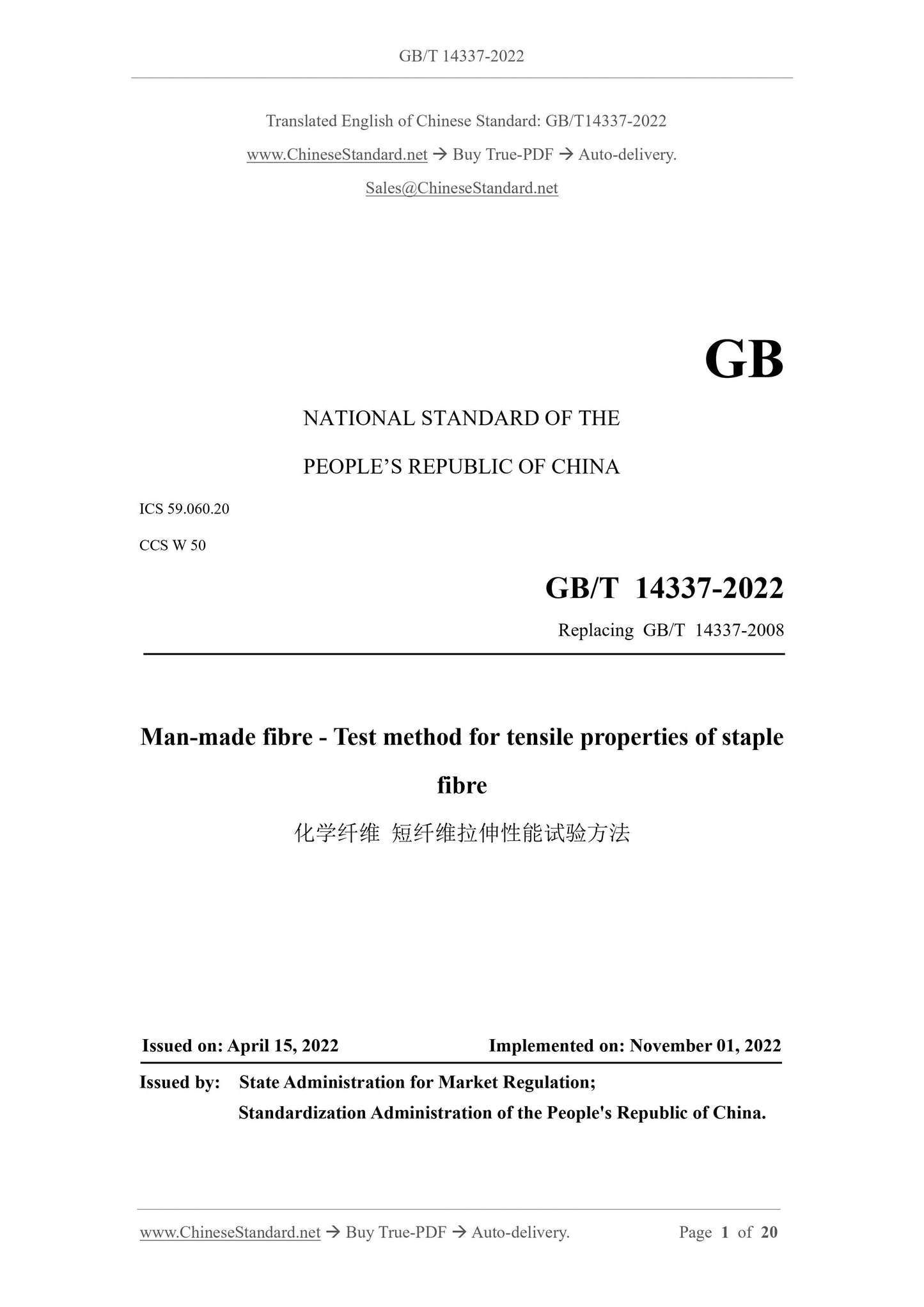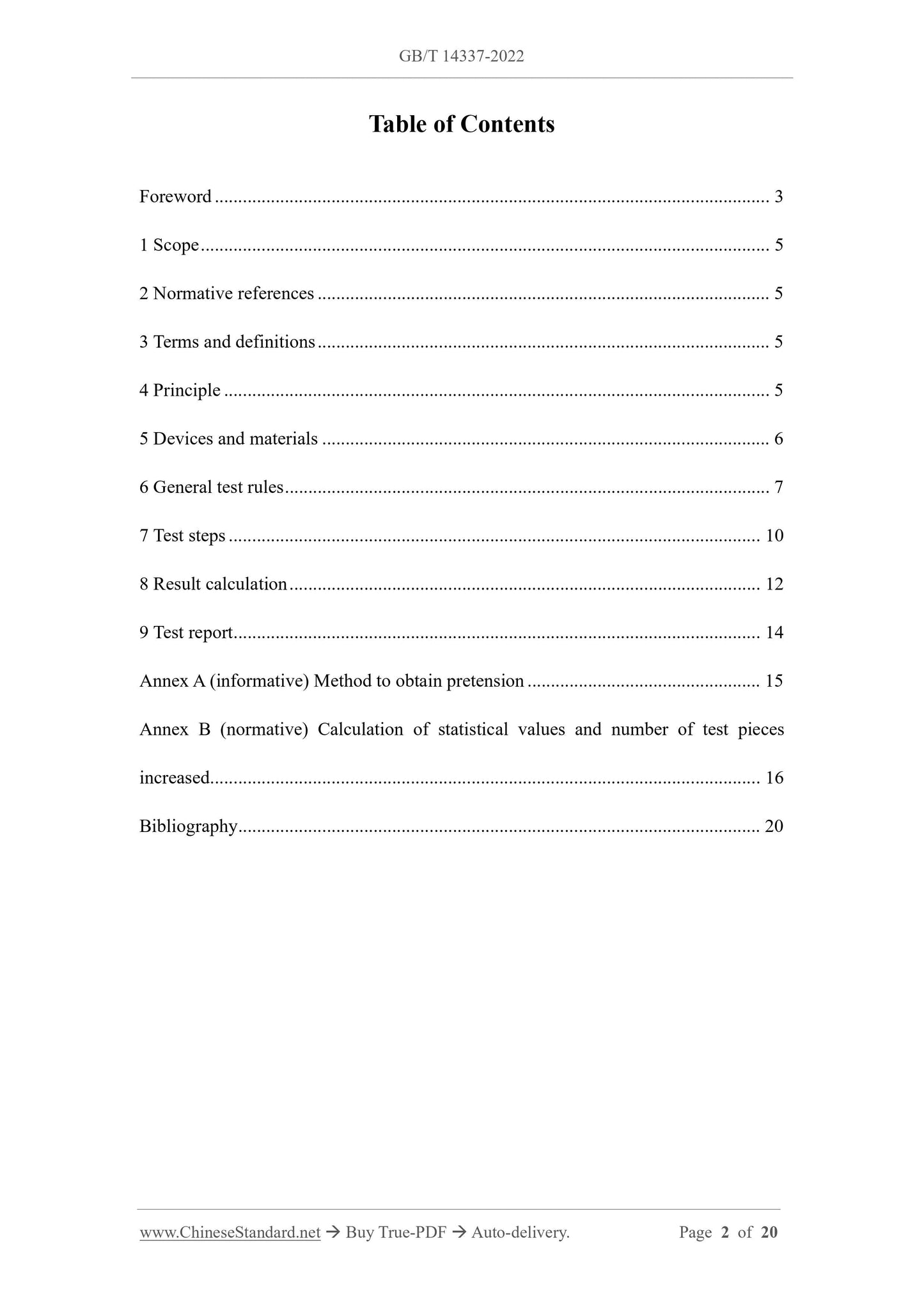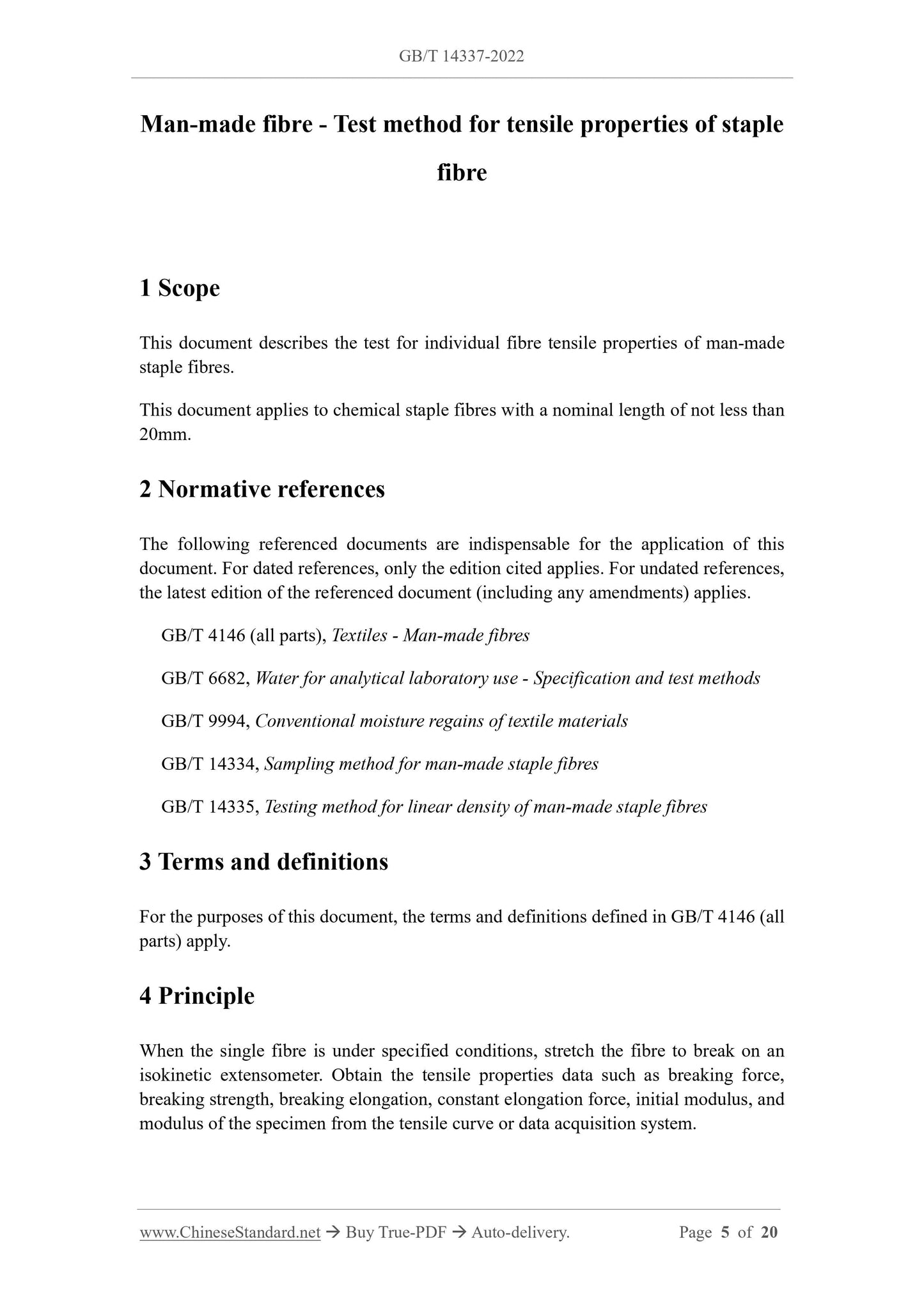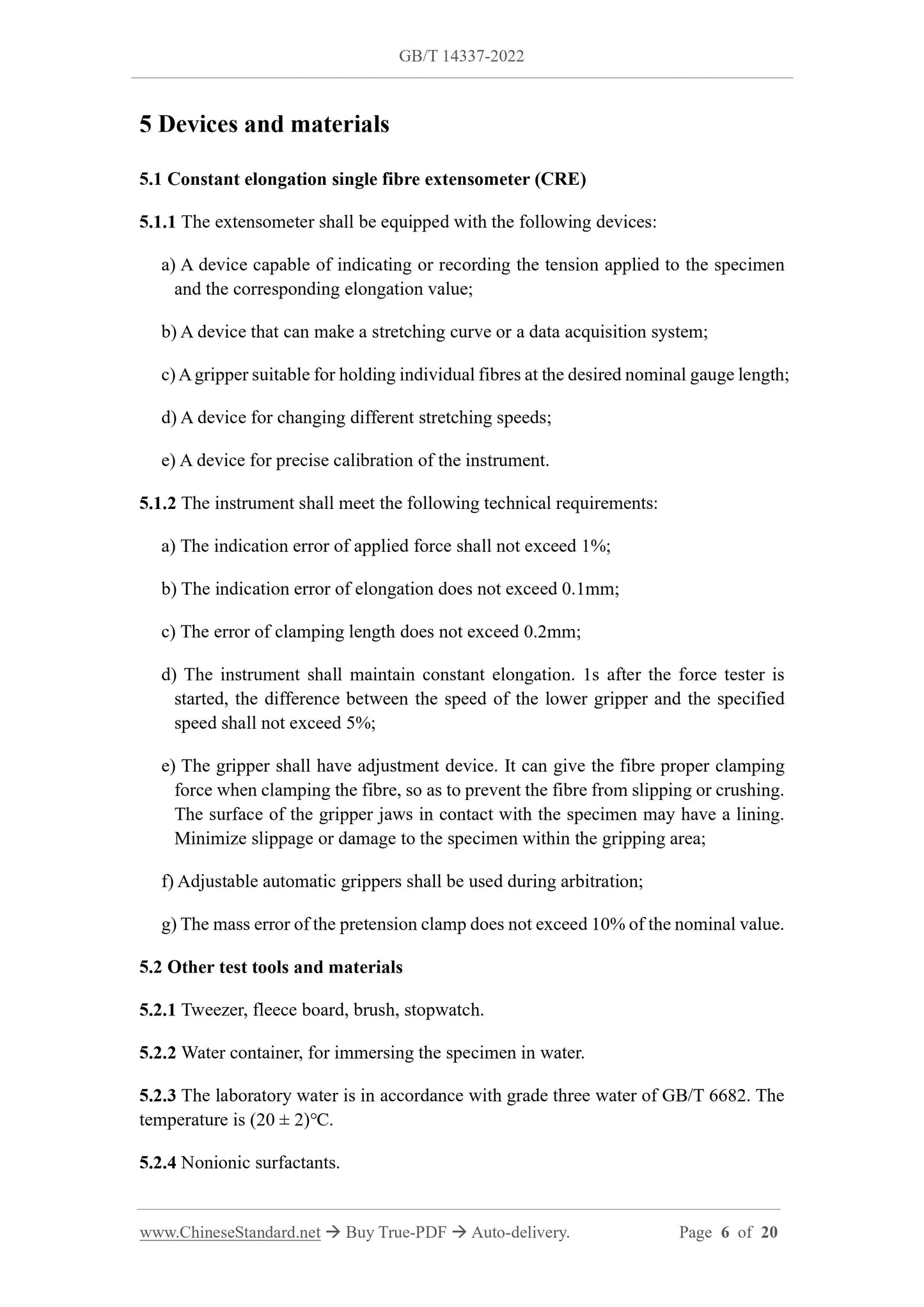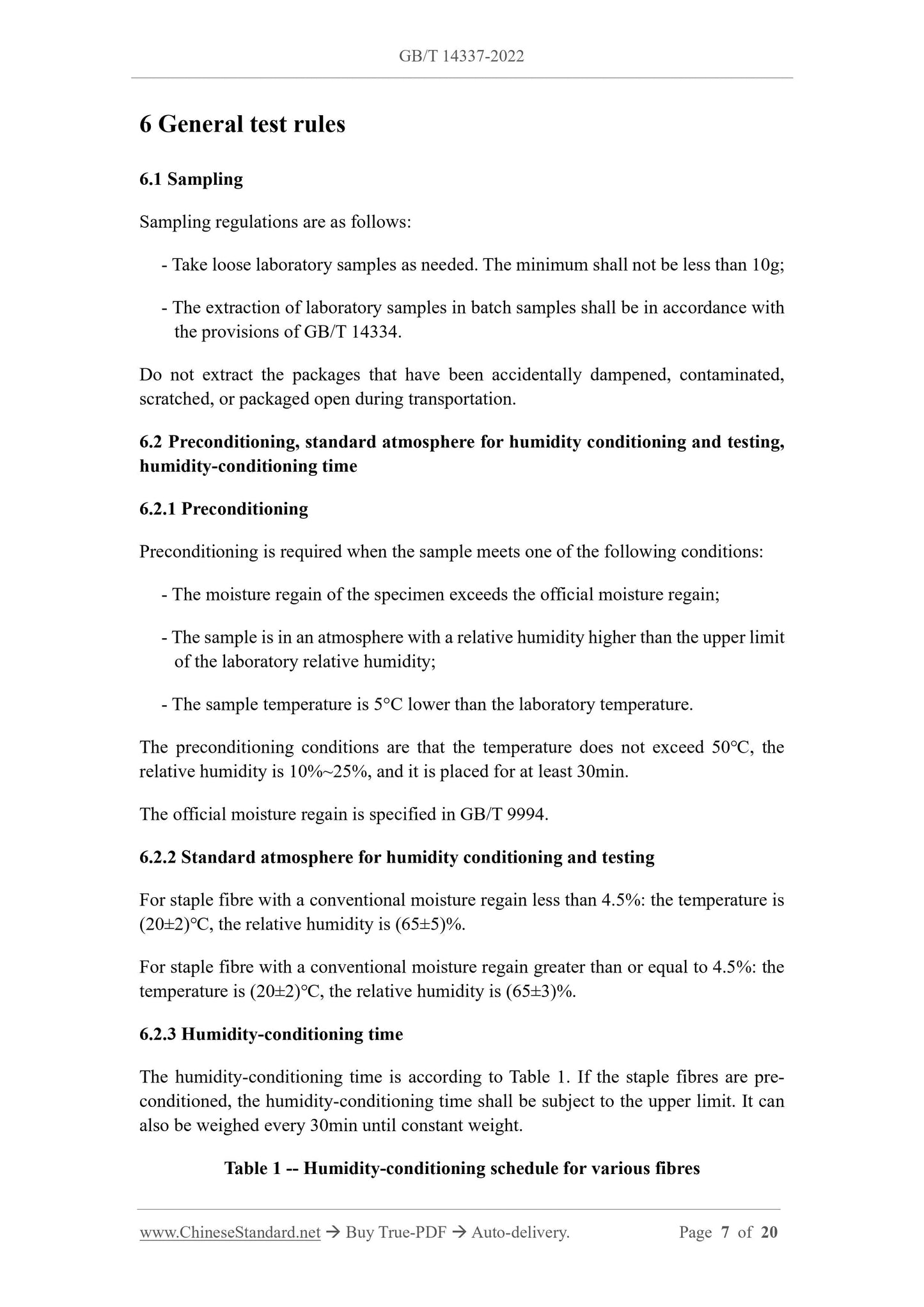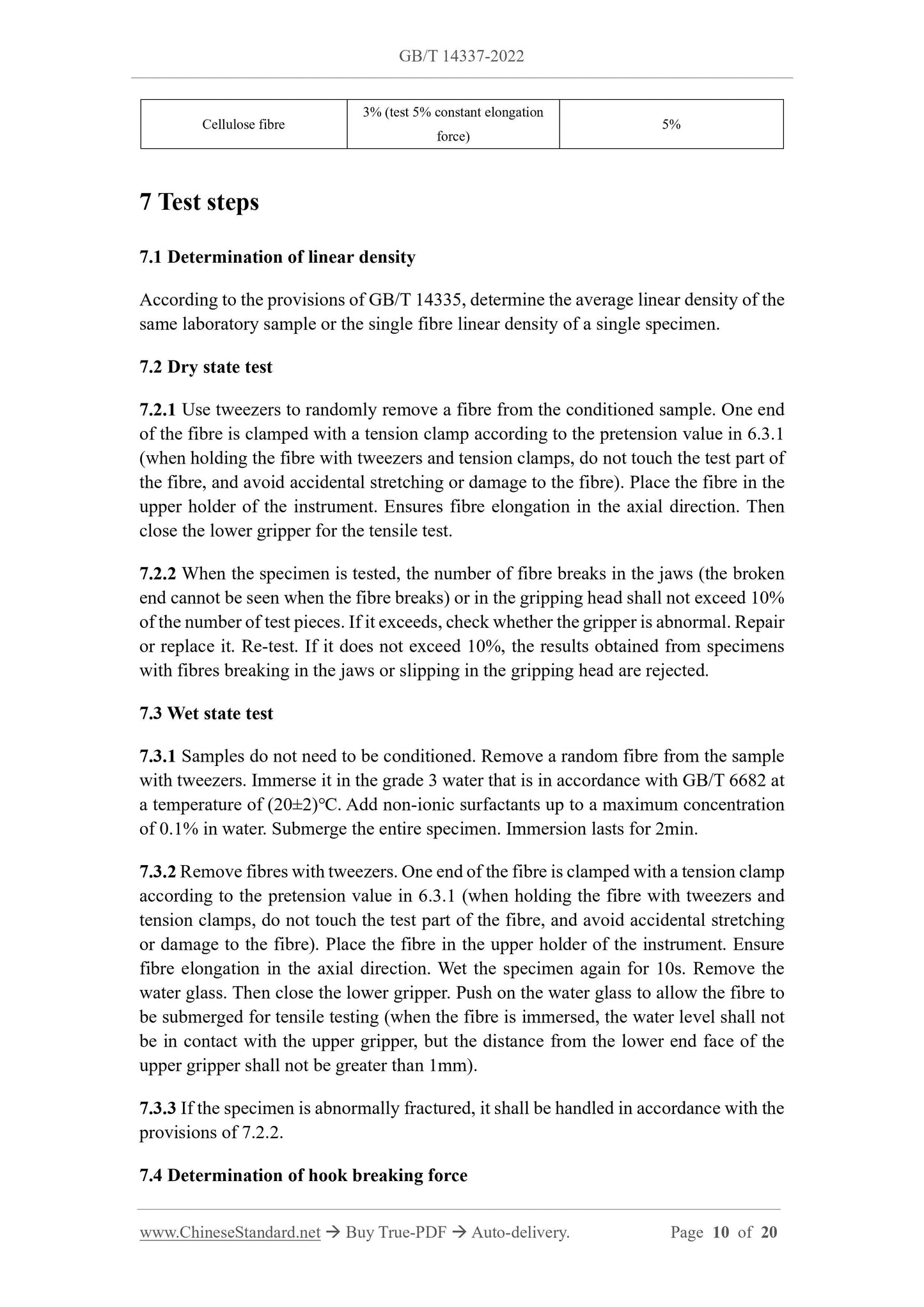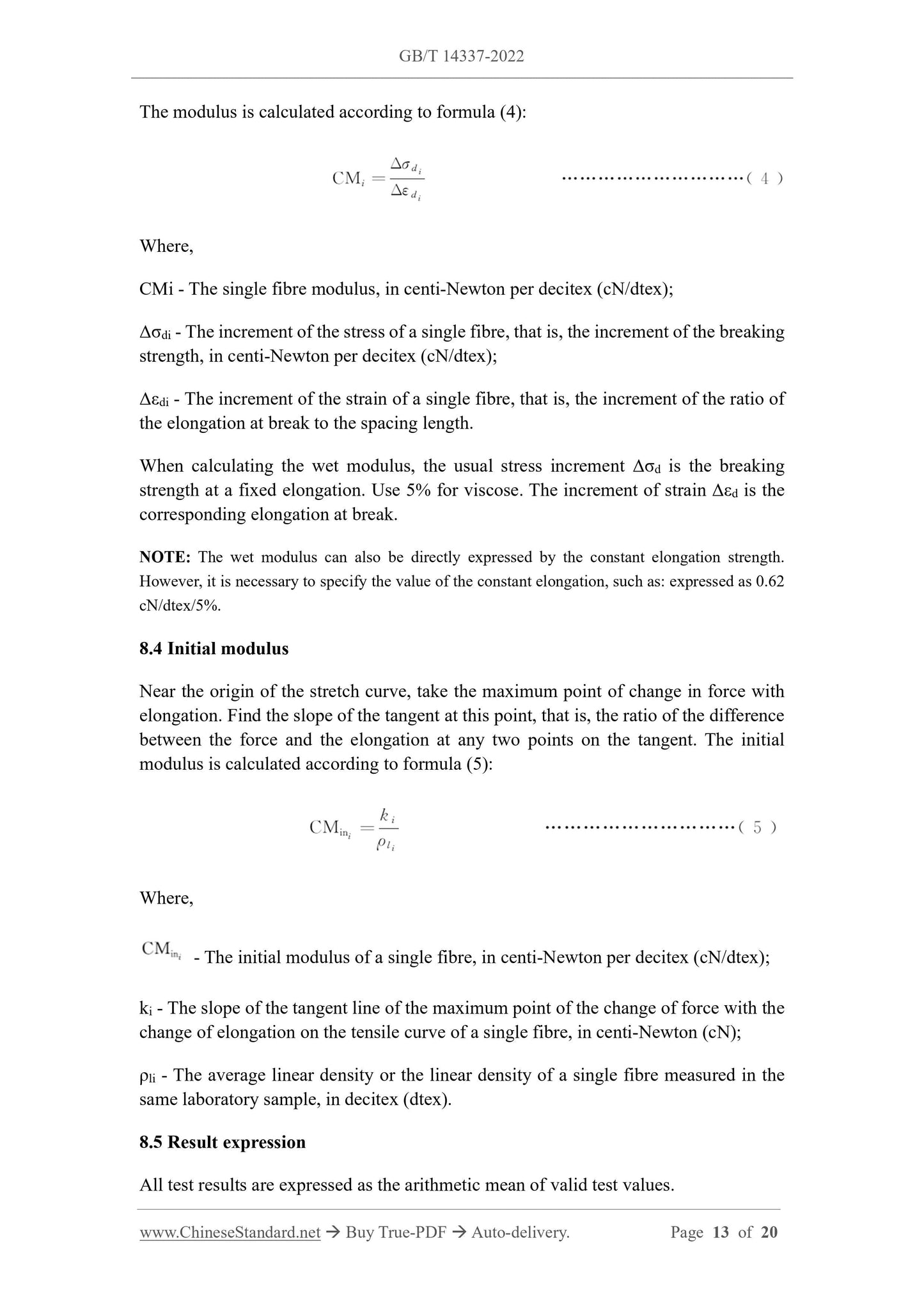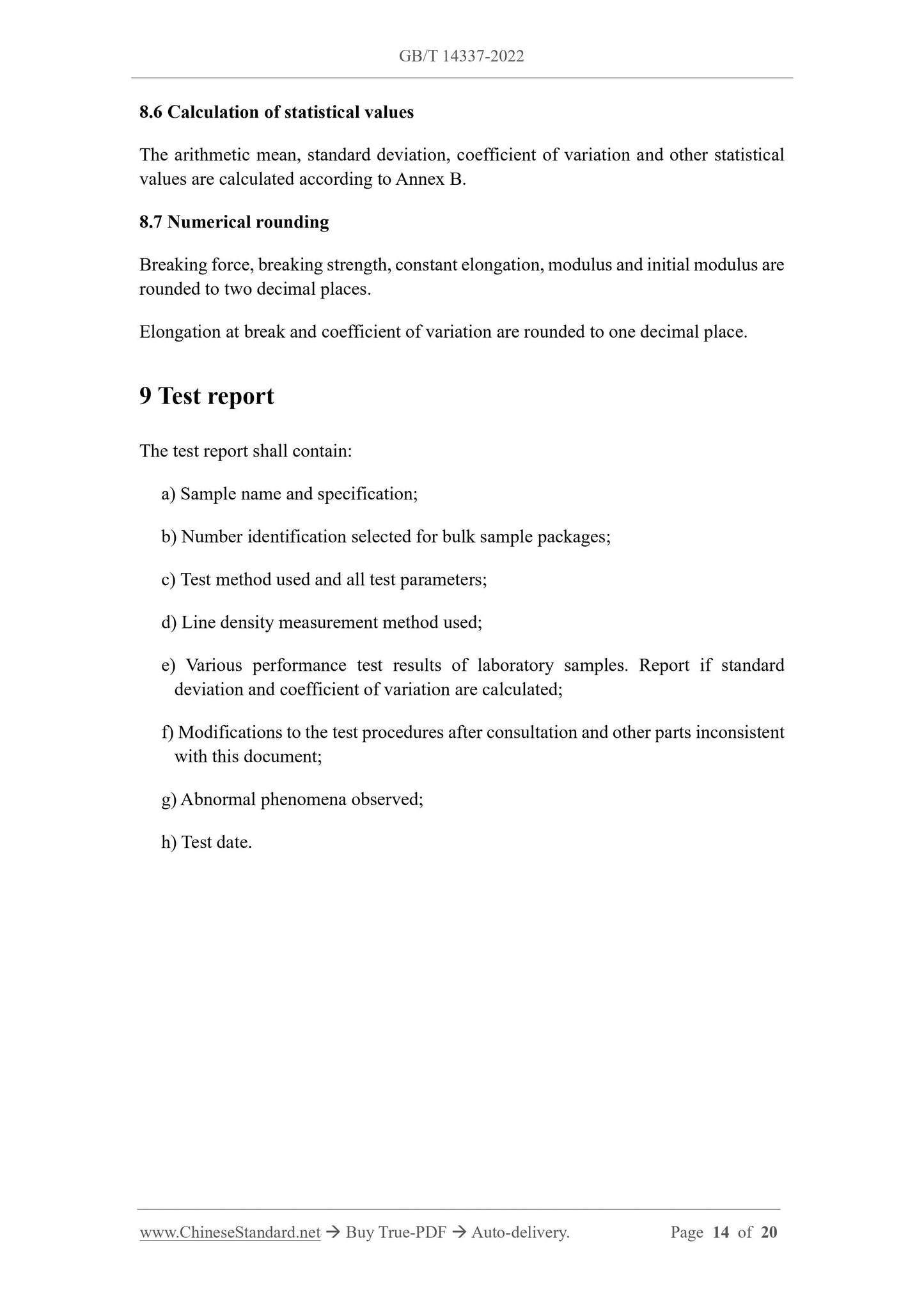1
/
of
8
www.ChineseStandard.us -- Field Test Asia Pte. Ltd.
GB/T 14337-2022 English PDF (GB/T14337-2022)
GB/T 14337-2022 English PDF (GB/T14337-2022)
Regular price
$230.00
Regular price
Sale price
$230.00
Unit price
/
per
Shipping calculated at checkout.
Couldn't load pickup availability
GB/T 14337-2022: Man-made fibre - Test method for tensile properties of staple fibre
Delivery: 9 seconds. Download (and Email) true-PDF + Invoice.Get Quotation: Click GB/T 14337-2022 (Self-service in 1-minute)
Newer / historical versions: GB/T 14337-2022
Preview True-PDF
Scope
This document describes the test for individual fibre tensile properties of man-madestaple fibres.
This document applies to chemical staple fibres with a nominal length of not less than
20mm.
Basic Data
| Standard ID | GB/T 14337-2022 (GB/T14337-2022) |
| Description (Translated English) | Man-made fibre - Test method for tensile properties of staple fibre |
| Sector / Industry | National Standard (Recommended) |
| Classification of Chinese Standard | W50 |
| Word Count Estimation | 14,196 |
| Issuing agency(ies) | State Administration for Market Regulation, China National Standardization Administration |
Share
